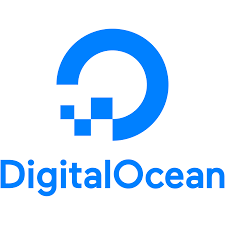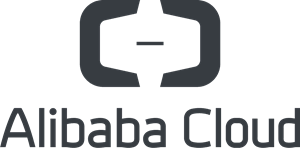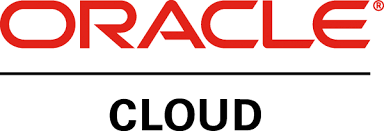Top 10 Kubernetes Services Providers
Kubernetes has emerged as the project to turn to if you require container orchestration at scale. The open-source container orchestrator has quickly gone from an avant-garde technology developed at Google to something close to a standardized infrastructure for cloud-native environments.
As cloud service providers and enterprises adopt Kubernetes rapidly to undergrid up-to-the-minute applications, a brand new generation of start-ups is making an appearance to increase the core technology with deeper code delivery, observability, and management, integration, and security features.
Contents
- 1 What are Kubernetes?
- 2 Advantages of Kubernetes implementation
- 3 Top 10 Kubernetes Services Providers
- 4 Rancher
- 5 Amazon Kubernetes
- 6 Azure Kubernetes
- 7 Google Kubernetes
- 8 Docker Enterprise
- 9 Digitalocean Kubernetes
- 10 Linode Kubernetes
- 11 IBM Kubernetes
- 12 Alibaba Kubernetes
- 13 Oracle Container Engine for Kubernetes
- 14 Conclusion
- 15 FAQ
- 16 What are Kubernetes?
- 17 What are the benefits of Kubernetes?
- 18 What are the best Kubernetes services?
What are Kubernetes?
Kubernetes, also known as “Kube” or K8s, is an open-source container orchestration platform. The platform automates many of the manual processes that are involved in managing, deploying, and scaling containerized applications.
Put simply, groups of hosts running Linux containers can be clustered together and Kubernetes will easily help you to effectively manage those clusters.
Kubernetes is regarded as the perfect platform for hosting cloud-native applications requiring rapid scaling because Kubernetes clusters can span hosts across public, on-premise, hybrid or private clouds.
Originally, Kubernetes was designed and developed by engineers at Google and Google was one of the early contributors to Linux container technology.
In a week, Google generates over 2 billion container deployments powered by Borg, its internal platform. Borg was the predecessor to Kubernetes and the primary influence behind much of Kubernetes technology are the lessons learned from developing Borg.
Advantages of Kubernetes implementation
Here are the core benefits of Kubernetes.
- Declarative in nature
Kubernetes is declarative in nature. If you describe to Kubernetes the desired state of the cluster, Kubernetes will make sure that the state is always fulfilled. In case you need to run 5 containers at once, you simply have to create a Deployment and set the number of replicas to 5.
- Microservice architecture
In comparison to monolithic apps whose constituent parts are neither modular nor reusable, Kubernetes enables application developers to write code as microservices, which are an application architecture prescribing dividing code into reusable, independent, and loosely coupled parts called services.
Based on the needs of the applications, these services can be scaled. Their loose coupling and small size make them easy to test, as well as, deploy rapidly.
- Portable, cloud-agnostic codebase
Kubernetes can virtually run on any on-premise hardware, public cloud, or even bare metal. Code can be redeployed several times when developing applications for Kubernetes, which allows you to choose your preferred infrastructure.
- Optimized usage of resources
Based on available resources, Kubernetes determines which Worker Nodes a container ought to run. Using Kubernetes, you can be assured that your computer resources will be efficiently used across the cluster. This will help you in reducing the servers or cloud instances that you operate, resulting in cost savings.
- Self-healing
Containers can fail due to various reasons. Kubernetes keeps deployments healthy by restarting those containers that have failed, replacing and killing unresponsive containers as per user-defined health checks, and also re-creating containers that were on a failed backend Node.
- Zero downtime with rolling deployments
In Kubernetes, pods are the smallest unit of computing and they’re responsible for running the containers of your application. Pods have the additional capability of enhancing the uptime of your application when compared to other solutions.
Kubernetes provides a solution with Deployments that creates additional pods and ensures that they are running and healthy before the old pods are destroyed. Kubernetes also roll back changes if the new containers fail. This ensures limited downtime and a strong user experience.
- Multi-container pods
Typically, Kubernetes pods run a single container. However, they can run multiple containers as well. This makes it easy to add a reusable ‘sidecar, loosely coupled container to a paid. These containers serve to augment the primary container running in a pod and share an IP address with the primary container.
- Service discoverability
All services must have an anticipated way of communicating with one another. Within Kubernetes, however, containers are destroyed and created many times over. So, a service might not exist permanently at a specific location. Traditionally, this meant that some sort of service registry would have to be adapted or created to the application logic to track the location of each container.
Kubernetes’ native Service concept groups pods and service discovery is simplified. The open-source platform provides an IP address for each pod and even assigns a DNS name for each set of pods. This helps in creating an environment where the service discovery is abstracted away from the container level.
Top 10 Kubernetes Services Providers
Here are the best ten Kubernetes providers.
Rancher

Rancher is a stable, user-friendly, and enterprise-grade Kubernetes management platform with more than 37,000 active users. It even comes with its Kubernetes distribution, Rancher Kubernetes that entirely runs within Docker containers.
The infrastructure-agnostic architecture of Rancher supports all CNCF-certified Kubernetes distribution. Rancher is an open-source company and dedicated to providing 100% open-source software with no vendor lock-in. Rancher was acquired by SUSE, an open-source vendor in July 2020. SUSE is the company behind one of the oldest Linux distributions.
A special attention on multi-cluster Kubernetes deployments is placed by Rancher and this is believed to be useful for enterprises wanting to deploy Kubernetes across multiple clouds. Similar to OpenShift, Rancher integrates Kubernetes with different tools. However, Rancher is much more flexible as it offers some choice for which components can be used.
Amazon Kubernetes

Amazon Elastic Kubernetes Service (EKS) is a relatively newer service but has seen a strong uptick in adoption in recent years. With EKS, you can run, start and scale Kubernetes applications in the AWS cloud, as well as, on-premises. Gradually, Amazon EKS is replacing ECS, which is AWS’s proprietary orchestrator.
EKS automates important Kubernetes management tasks like node provisioning, patching, and updates. It also includes encryption and built-in security, integration with CloudWatch for logging, automatic updating, IAM for access permissions, and CloudTrail for auditing. AWS contributed to the open-source K8s codebase for maximizing functionality for its users.
At re:Invent 2020, AWS even introduced a new open-source K8s distribution, known as EKS Distro, and a brand new deployment option for Amazon EKS, known as Amazon EKS Anywhere. This enables you to create and also operate Kubernetes clusters on your infrastructure including bare metal and virtual machines.
Azure Kubernetes

For Kubernetes users on Azure, Microsoft’s AKS is becoming the norm and two-thirds have already adopted it. As with EKS and GKE, AKS provides a managed upstream K8s environment, along with cluster monitoring and automatic upgrades to simplify the management, deployment, and operations of Kubernetes. To provision a cluster, AKS offers several ways including command line, web console, Terraform, and Azure resource manager.
Azure Kubernetes Service began as an orchestrator-agnostic platform supporting Mesosphere DC/OS, Kubernetes, and Docker Swarm. Microsoft starting offering Kubernetes management service in late 2017 and this resulted in the criticism of ACS and the continuation of AKS.
Google Kubernetes

Google Kubernetes Engine is the first cloud-based managed Kubernetes service available on the market. GKE is a managed environment for scaling, deploying, and managing containerized applications in a safe Google infrastructure.
As K8s was created by Google engineers itself for their in-house container orchestration, GKE is thought to be one of the most advanced Kubernetes platforms that are available today. The platform is designed for use on Google Cloud and it can even be deployed in hybrid environments, as well as, on-premises.
Besides making it easy for you to create clusters, GKE also provides advanced cluster management features, such as auto-scaling, load balancing, auto repair, auto upgrades, logging and monitoring, and so on.
Docker Enterprise

Docker split up by the end of 2019 and Docker Enterprise was acquired by Mirantis, which is a K8s and OpenStack services company. However, the open-source product remained with Docker Inc. Recently, Mirantis rolled out major updates to the product while keeping the Docker Enterprise name. These updates are aimed at helping the product compete better with the leading hybrid cloud players like Red Hat.
Docker Enterprise is a platform that enables you to run both orchestrators Swarm and Kubernetes in the same cluster. Also, it integrates with several open-source Docker tools and with Lens, which is the most popular Kubernetes IDE in the world that lets you analyze, visualize and iterate code quickly on one or even multiple clusters.
Digitalocean Kubernetes

DOKS (DigitalOcean Kubernetes) is a managed Kubernetes service and it is deployed on the DigitalOcean Cloud. It allows the creation of scalable Kubernetes clusters and offers full access to Kubernetes APIs while the control plane-related activities are managed in the background. It also provides streamlined operations with cluster scheduling, monitoring, and also automated app deployment.
Users of DOKS are allowed to access and even interact with the cluster through the kubectl and doctl command utilities by utilizing Kubernetes APIs. The clusters based on DOKS can impact DigitalOcean Load Balancers negatively and also storage volumes are blocked, enabling the development of high-performing and stable apps.
Users can make use of the DigitalOcean CSI plugin to block storage volumes. For overlay networking configurations and clusters, it offers support for Cilium. It also provides support for tools like Istio, metrics-server, and Helm.
Linode Kubernetes

LKE or Linode Kubernetes Engine is a fully managed container orchestration engine that helps with the deployment and management of containerized workloads and applications.
LKE combines the simple pricing and ease of use of Linode with Kubernetes’ infrastructure efficiency. Users can now get their workloads and infrastructure up and running within minutes instead of days.
LKE even comes with a complimentary Kubernetes Master per cluster without any additional charge and this includes a complimentary control panel including scheduler, API, resource controllers, and etcd. LKE continuously backs up a snapshot of your cluster’s metadata so that your cluster is restored automatically in the future.
Moreover, you can leverage the strong open-source ecosystem of Kubernetes since LKE supports integration with K8s-related tools like Operators, Helm, Rancher, and more.
IBM Kubernetes

IBM Cloud Container Service has been available since May 2017 as one of the first mature and fully-managed Kubernetes offerings in the cloud. In 2018, it was renamed and came to be known as IBM Cloud Kubernetes Service, and the new aims to bring to light the strategic investment of IBM in Kubernetes while also reflecting that IBM is a founder of CNCF K8s Conformance Testing.
With IBM Cloud Kubernetes Service, users can create their Kubernetes clusters to manage and deploy containerized applications on IBM Cloud. The service offers native Kubernetes capabilities like self-healing, intelligent scheduling, service discovery, horizontal scaling, automated rollouts and rollbacks, load balancing, and secret and configuration management.
Alibaba Kubernetes

Alibaba Cloud Container Service for Kubernetes (ACK) integrates storage, virtualization, security, and networking capabilities. ACK enables you to deploy applications in highly scalable and high-performance containers and offers full lifecycle management of enterprise-grade containerized applications.
Alibaba Cloud was one of the first vendors who passed the global Kubernetes conformance certification tests. Professional support and services are offered by Alibaba Cloud.
Oracle Container Engine for Kubernetes

Oracle has been working hard to reinvent themselves and become ready for a Kubernetes-focused world. They found their answer in Oracle Container Engine for Kubernetes or OKE.
For containerized applications, OKE is a fully managed service and it can be used to create Kubernetes clusters making use of the browser-based Console and also REST APIs.
Users can interact with these clusters by utilizing Kubernetes Dashboard, Kubernetes API, and Kubernetes command-line utility (kubectl). It can be used to deploy, build and also manage applications that are running on the Oracle Cloud.
OKE makes use of the Kubernetes containers for automated management and deployment of these containerized applications. Users only need to specify the resources that they need for their application and OKE provisions them in OCI (Oracle Cloud Infrastructure).
In the OKE, all services can be integrated with IAM (Identity and Access Management) for authorization and authentication. Furthermore, the OKE cluster can be integrated with Wercker, which is a Docker-based continuous delivery platform.
Conclusion
The adoption of Kubernetes continues to grow and this is driving the open-source platform’s tools to evolve. Enterprises with large container environments can make use of these Kubernetes services providers to overcome the challenges of deploying, managing, and configuring a cluster on their own.
FAQ
What are Kubernetes?
Open-source container orchestration platform.
What are the benefits of Kubernetes?
– Microservices architecture
– Portable
– Declarative
What are the best Kubernetes services?
– Rancher
– AWS
– Google Cloud
– Azure
– Alibaba Cloud
– Digital Ocean
– Linode
– IBM Cloud
– Docker
– Oracle Cloud



